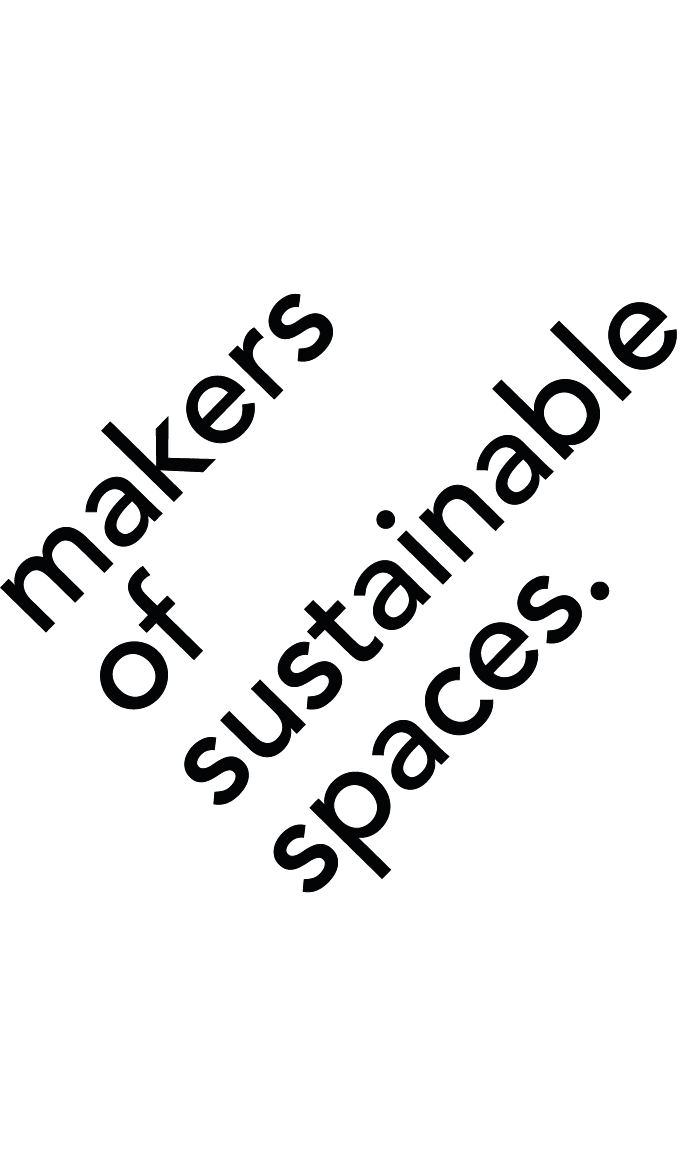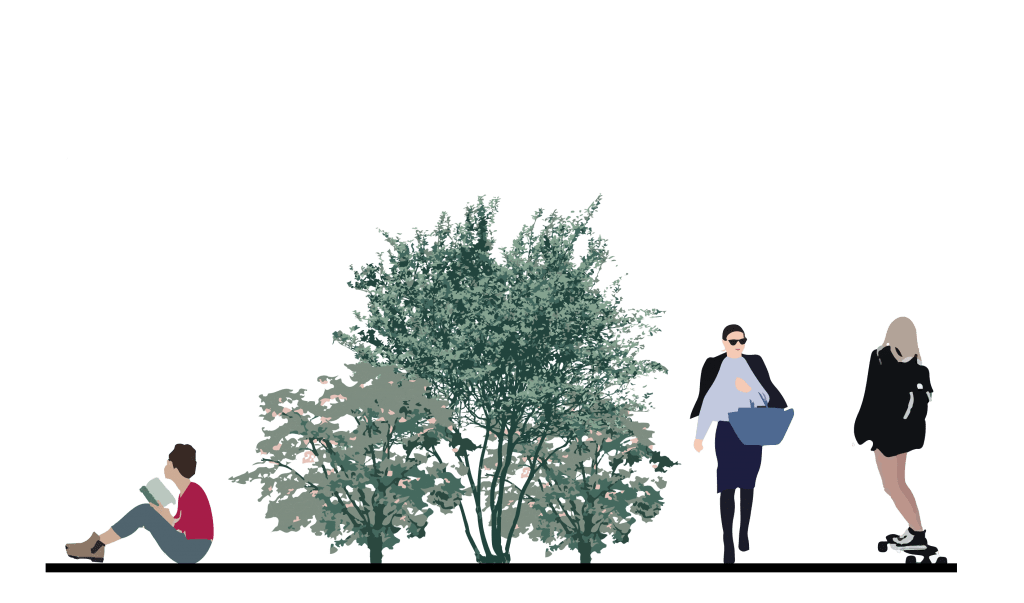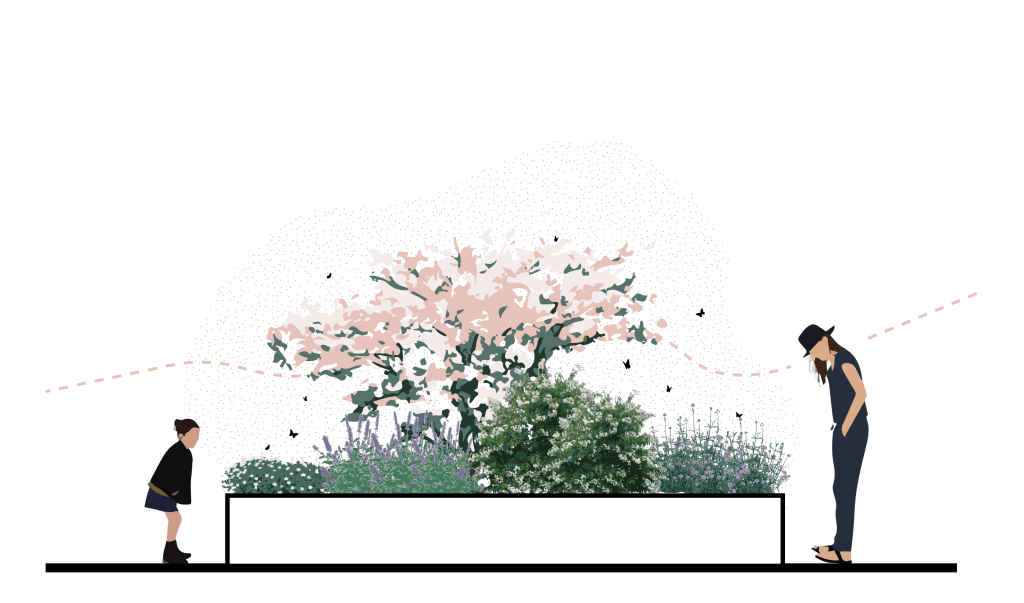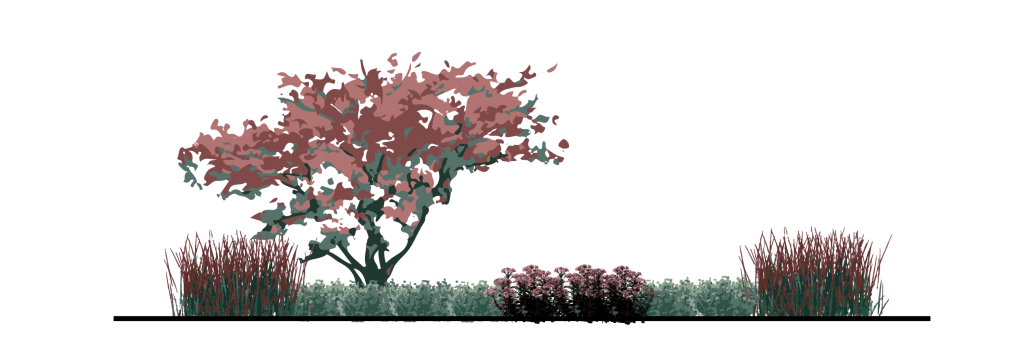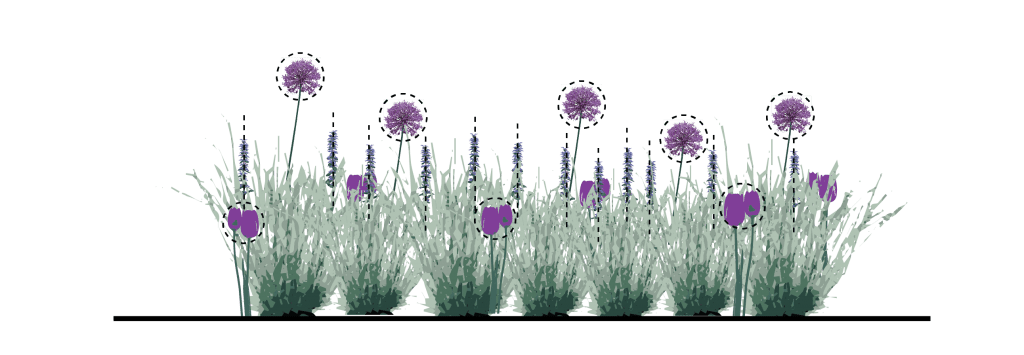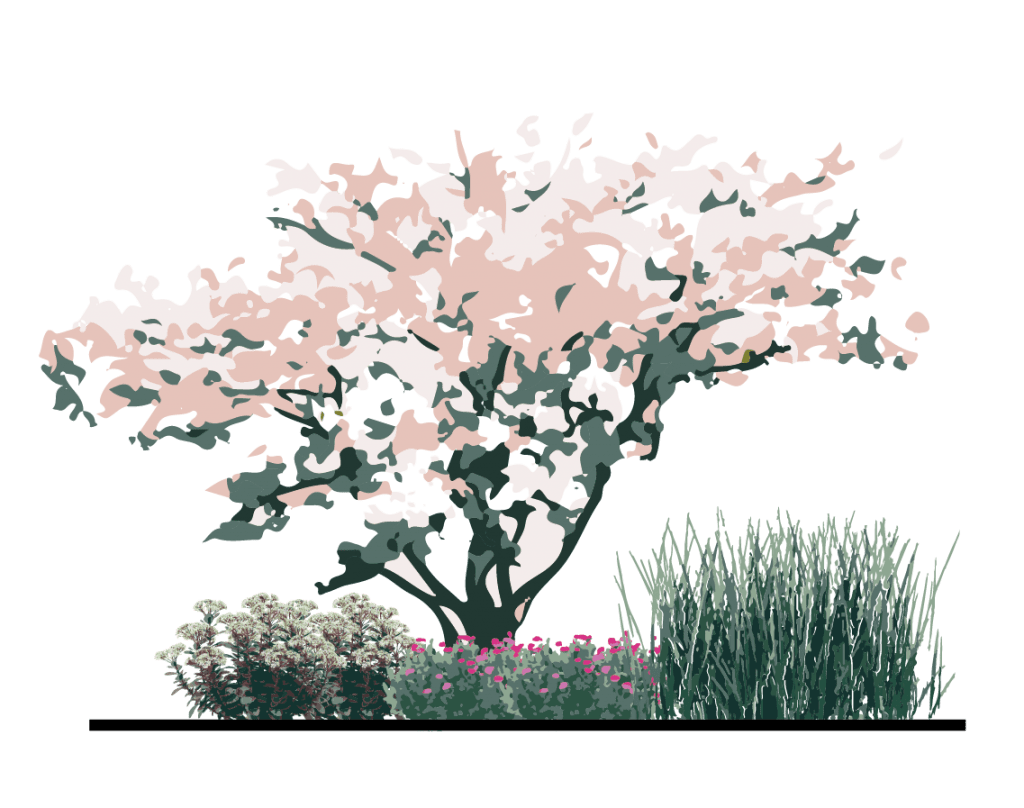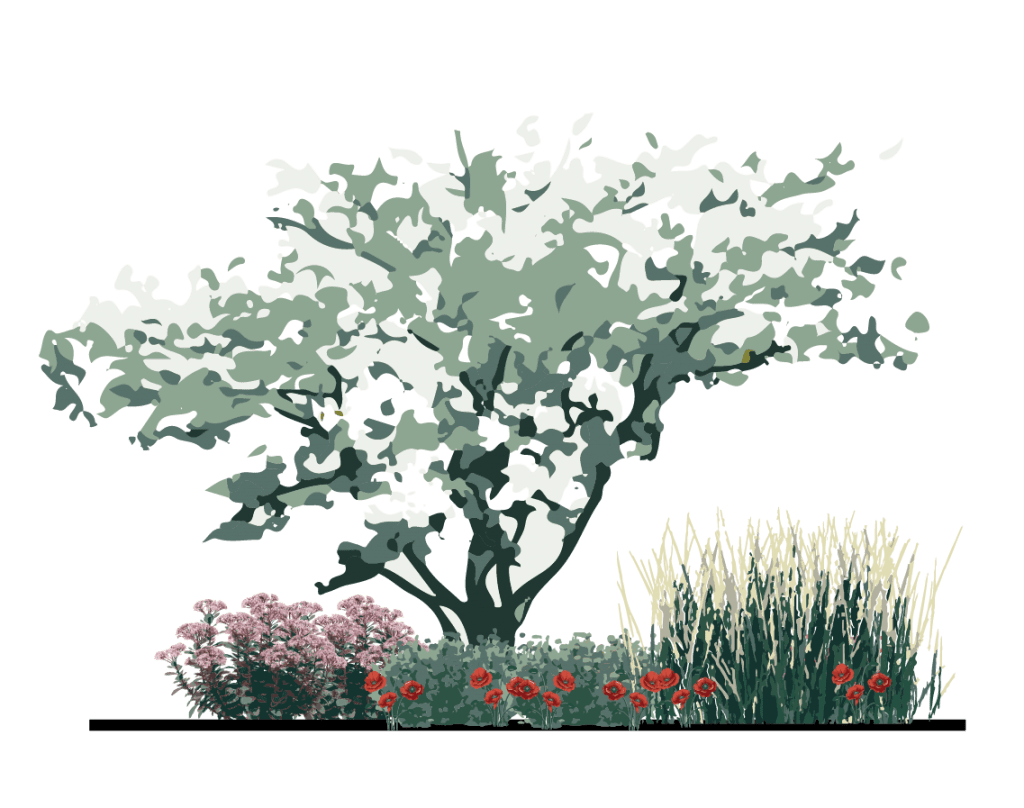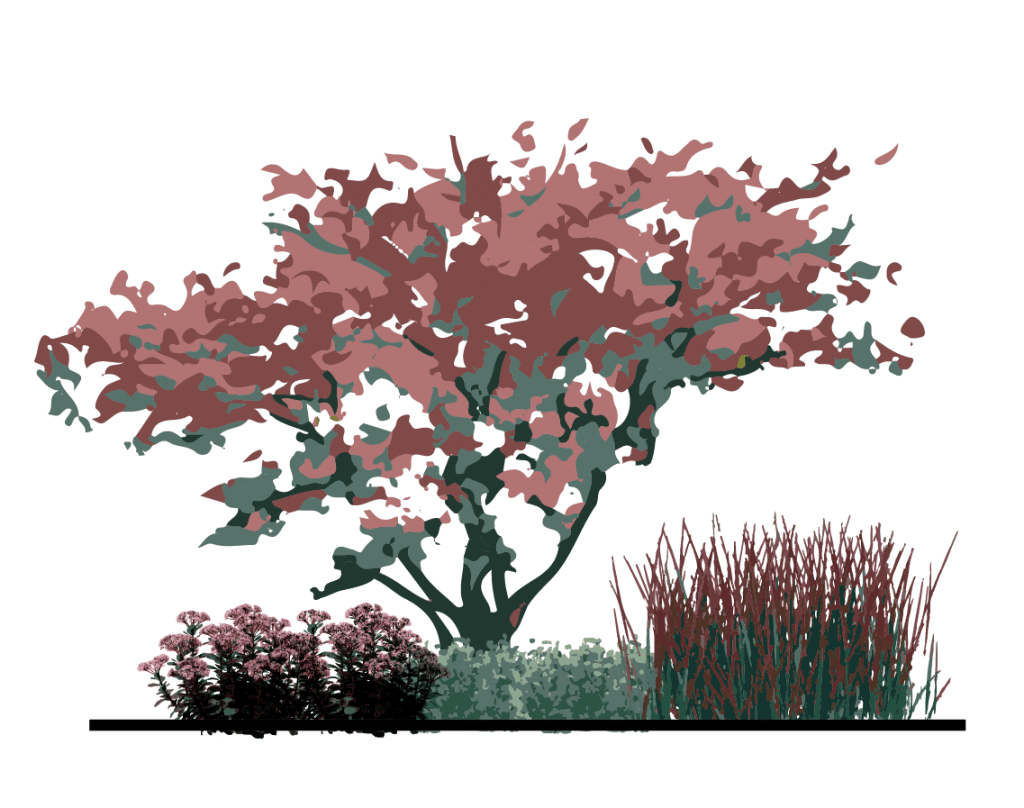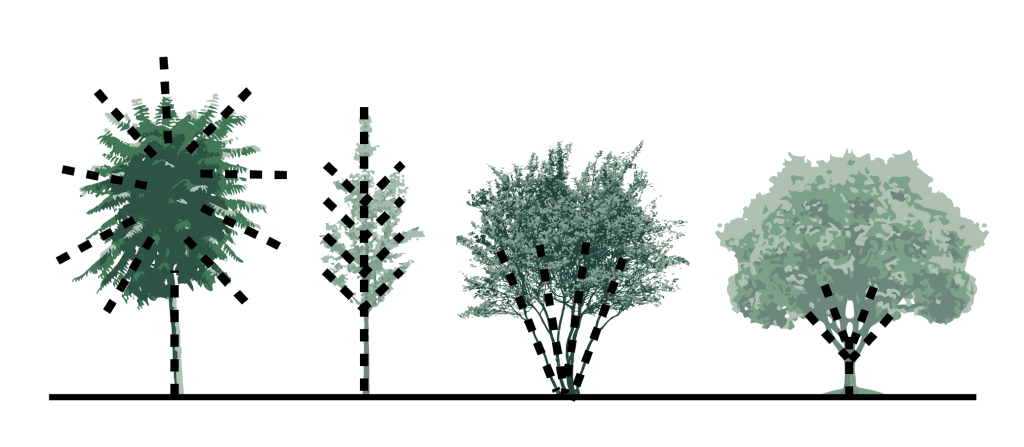16 Jan How to design with plants?
by Eirini Trachana
“By designing, we give meaning to our surroundings”. As Christian Norberg Schulz states in his book ‘Genius loci’. “when the surroundings get meaning, humans feel at home.” Plants with their appearance, their structure, their dynamic growth and their change through time, give unlimited possibilities for design. At MOSS, plants are the tools for our designs. And because plants are alive, they are such a special material to design with! This makes the design process more interesting and full of aspects to explore. This blogpost focuses on exploring outdoor planting designs. So, let’s explore a few of these main design processes together. How to design with the most dynamic material of all, plants!
According to Burle Marx, one of the most influential landscape architects of the 20th century, “a garden is nature organised by man for man”. But some would say this is an idea from the past. The new movement in garden design is to allow nature to run its course and as a landscaper to make use of the power of Mother Nature herself to select plants that flourish when they are placed together. Noel Kingsbury, and his book “Wild, the naturalistic garden” from 2022, writes “there is a general feeling that the new style of planting is a good thing – that it is somehow more sustainable, better for the environment and wildlife, perhaps lower maintenance.” As green designers though, we still make design choices and selections. In this post, we see some of the aspects that allow us to design with plants.
By researching plants, we discover that they are an endless source of surprising, three – dimensional objects with variable characteristics. Their characteristics give opportunities and limitations. Taking into consideration the nature of plants as a material, in combination with design concepts and baselines, is the way to create landscape designs in any scale. Appearance of plants changes throughout the year, and at the same time, appearances of plants are already so variable from plant to plant.
Diversity is related to the nature of plants as design material, however basic design questions apply, like “how does this material fit with its surroundings”. In order to answer the question “How do we design with plants?”, we need to analyse design and plants separately, but also together. How do we draw and what are the plant specifications that we need to take into consideration?
Design aspects
- Atmosphere
- Rhythm
- Accents
- Surroundings
Plant specifications
- Seasons
- Colour and texture
- Silhouette
- Conditions
DESIGN ASPECTS
Atmosphere
The atmosphere of a design is one of the main aspects to consider. The form of plants can be used to block or allow light to shine through. The density of planting can completely transform a garden, a landscape or a pavement, for example. Plants can be planted in groups or as solitaire landmarks in the landscape. How do we use the space? We say ‘let’s meet in the park under the big tree with the purple leaves’, in this case the tree is transformed into a landmark. We sit with big shrubs on our backs to get some privacy in order to read a book. We run along roads following the tree lines. Plants give the opportunity to create enclosure, frame the views, add accents or guidelines for people to use.
Rhythm
Patterns appear often in nature. Patterns appear also in design and in art because human creation often copies nature. Research has been done, from the psychologist Carl G. Jung, about the way humans express themselves through patterns and geometric forms. Rhythm, pattern, symbols and repetition are connected to human artistic expression. This is why rhythm is a big subject when it comes to design. Plants give unlimited possibilities to create repetition. It can be repetitive forms, shapes, heights, colour or accents. Plants are so dynamic and complex, that the patterns can change throughout the year. For example, in the same garden the red fall colour can repeat in different plants and work as an eye catcher, in summer the same planting scheme can have purple flowers which appear in different locations in the garden as accents, and in winter, the textures and heights can form a pattern.
Repetition and patterns are also related to balance, which is an important aspect when we are talking about a design composition. It is related to the way our brains function that we recognise patterns and a balanced composition makes us feel in peace with our surroundings.
Accents
Plants allow a great variety of options for creating accents in the space we design. For example, the entrance of a building becomes visible from a larger distance when two long, vertical trees are planted to mark it. In a completely different scale, some crocus bulbs are catching all the attention when they create a purple carpet at the end of February in a garden which is still not green. Accents are used in a design to create eye catchers in different scale and for different purposes.
Plant height and colour are usually used to create accents. For example, in a ‘carpet’ created by a plant with one colour and a simple form the addition of coloured flowers is the accent. Another way is creating ‘islands’ of colour or ‘islands’ of high plants that are standing out among their surrounding plants.
Surroundings
How does a planting scheme fit with its surroundings? Through the design, green gets integrated into the surroundings. When it comes to the entrance of a building, for example, green needs to complement it and not hide it. Sometimes colour can be an important design aspect. Plants come in combination with the materialisation that surrounds them. Sometimes, for example, yellow flowers can “disappear” in front of a yellow fence or a bright pink flower can collide with the red bike path. As green designers, we take into consideration the way green is in a constant dialogue with the elements around it.
PLANT SPECIFICATIONS
Working with a living material that offers so much restriction and so much flexibility at the same time makes our design work fun! However, not only the main design aspects are important when we design with plants but also the plant specifications, shape, colour, and seasonality.
Seasons
The dynamic of plants is incredible! The same garden can look different everyday. Some months of green trees and shrubs, some months full of colour and fruits, and some months with a view of sleeping nature, with only a few silhouettes. The complexity and plethora of options that seasonality gives is fascinating! We can design a summer garden or a spring garden, if the place is used mostly during specific months. Or we can think of the way the design looks the whole year round. In this case, we need to research the atmosphere, the rhythm, the accents and the way the design fits in its surroundings for every season separately. Spring is usually colourful and green, full of life, smells and flowers, summer is about the same, a bit more dry but equally cheerful, autumn gives the opportunity to have both worlds, colour and late flowers but also mysterious and dry textures, and finally, winter is all about the shapes, plant silhouettes and some evergreens.
As explained in the book “Wild, the naturalistic garden”, the ‘winter garden’ is a relatively new approach because in the field of green in the past decades grasses and perennials would be cut off during the winter season. ’Ornamental grasses and some perennials can look very fine just at that time, late autumn and early winter, which was traditionally regarded as the nadir of the garden year’. This is a proof that designing with plants is a rich field full of surprises, that gives a large range of possibilities to be explored.
Colour and texture
Usually, plants are green. But is that true? What happens when a plant has a very thin green stem which carries a gorgeous red flower on the end. Is it green or red? Or both? Besides that, plants can have colourful stems or they can be not green at all. Colour needs to be used carefully in order to meet all the design aspects that we discussed before. Colour should have its own concept in the design process in order to create the atmosphere we want, make a repetition that we recognise, add the accents, and fit to its surroundings.
Texture is strongly connected with the atmosphere in a design. Plants that have a loose structure that can be blown by the wind offer different feelings and sounds than strong, stable, upright plants.
Silhouette
Plant silhouette include height, spread, shape, density, and plant structure. These are the plant characteristics that are useful in designing in multiple ways. Height, either low or high plants have different functions. High plants can be used as landmarks, as accents, as guidelines or to give some ‘drama’ in a composition. Low plants can be used as green carpets, ground covers or fillers. But height is relative to the site. Is it a landscape that we design, is it an enclosed garden or a planter integrated in furniture? Additionally, plant heights are relative to the plants or the elements that surround the plant. An one-meter high plant is considered ‘high vegetation’ when it is integrated in a planter on a rooftop terrace but ‘low vegetation’ when it is in a landscape next to a twenty meter high tree.
Plants are three dimensional objects and their spread is important. The fascinating part is the unpredictability of this spread and how we integrate this unpredictability in our designs. How beautiful when the plants are growing, they are merging with each other and they are creating a nice colourful volume. And how sad at the same time when a plant can’t grow because it is against a wall and it is struggling to fit its branches.
One thing to take into consideration, together with the spread of a plant, is the plant’s shape. Does it grow around a central point or is it spreading towards all the directions? As a tree, is it more vertical or is it round? Those aspects can help us decide which plant goes where. For example, we need vertical shaped trees if we design relatively close to a building’s facade. Density of the leaves and the branches or stems can make a difference, as well. Do we want to see through the plant or we want it to create privacy? All these questions, have multiple answers and the answers are the different plant species. The more plants we research, the more possibilities we have and the more understanding of how unlimited the options to create something beautiful are.
The plant structure is very important because it can change everything. What if we have a climbing plant that with the right support structure can grow up to 30 meter high and cover an entire building facade? At the same time, the atmosphere of the design can be highly influenced by the structure of the plants. Elegant, multi-stem Japanese maple trees in combination with geometrical plants can create the feel of a high-end design.
Conditions
The conditions that a plant prefers to grow are restrictions that the plants are ‘giving’ to the designer. Plants prefer shady or sunny spots, they like rocky or sandy soils or they like wet or dry feet. The world of plants is giving opportunities to design and also limitations. Careful consideration of these limitations is key to a successful and sustainable design. We give the plants the conditions they need in order to thrive and they give us back the aesthetics and functionality we design.
“A man feels at home when the surroundings get meaning“
Christian Norberg Schulz
CONCLUSION
As an insight of a landscape architect’s job, this is a quick review of some aspects related to the question “how do we design with plants”. This question has many answers and more areas to explore. Do we use exotic plants or only natives? What about maintenance? Which plants live well together? Additionally, this is a text focused on outdoor green. Indoor greening and biophilic design is a different world.
This text is focused on design values, like rhythm and accents, in combination with plant characteristics like shape and colour. We see some examples of the way plants function in a design, the way plants are integrated in a design and at the same time the limitations plants add to the design. All these aspects related to planting design are exciting fields to explore the world’s most dynamic design material, plants!
PLANTS. WHAT A FASCINATING DESIGN MATERIAL!


Sources
- Jens Hoffmann, Claudia J.Nahson, “Roberto Burle Marx, Brazilian Modernist”, The Jewish museum, New York, Yale University press, New Haven and London, 2016
- Carl G. Jung, M.-L. von Franz, Joseph L. Henderson, Jolande Jacobi, Aniela Jaffe, “Man and his symbols”, Anchor Press, Doubleday, New York, London, Toronto, Sydney, Auckland, 1964
- Noel Kingsbury, Claire Takacs, “Wild, the Naturalistic Garden”, Phaidon Press Limited, 2022
- Christian Norberg Schulz, “Genius loci” Towards a Phenomenology of Architecture, Rizzoli international publications, 1980
- Nigel Dunnet on pinterest, cover image “Achillea ‘Terracotta’, Salvia ‘Caradonna’, Kniphofia ‘Tawney King'”
